Interview of Richard Wilson (April 2011)
Richard Wilson is well-known for this WinAPE emulator. But his activities related to the Amstrad CPC did not start recently and is absolutely not tied to WinAPE emulator development. Actually he has been quite productive for a long, long time.. I was definitively curious to know more about all of that... See how lucky I am : Richard kindly accepted to answer my questions, yepee ! :)
1. Hi Richard. Please can you present yourself ? (your age, country, what do you do in real-life, etc.).

Hi Arnaud. I'm now 40 years old and living in the country town of Westbury in Tasmania, Australia. This is one of the places I grew up in and my parents have lived here since 1978. I was born in Tasmania, but my Dad is from Lancashire UK and I've spent quite a few years in the UK.
In real life I run an internet based business called Tassie Cars where we advertise vehicles for sale in Tasmania for car dealers and the general public, and I also do development work for a company called TraderServe who are based in London. Just about all the development I do these days is Java, but I still like to get stuck into a few Z80 projects.
In real life I run an internet based business called Tassie Cars where we advertise vehicles for sale in Tasmania for car dealers and the general public, and I also do development work for a company called TraderServe who are based in London. Just about all the development I do these days is Java, but I still like to get stuck into a few Z80 projects.
2. When did you meet the Amstrad CPC for the first time. Was it your first computer ?
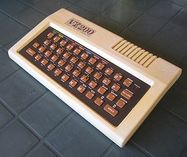
My first computer was actually a Dick Smith VZ-200. Known as the Laser 200, Texet (?) or Salora Fellow in other countries. It's a simple Z80 based computer with a 6847 graphics chip (completely different to the 6845). I learnt Z80 assembler from Rodney Zacks' Programming the Z80, and used to write games in Z80 on my weekends back in 1983. I didn't actually have an assembler so I wrote it all on paper and worked out all the op-codes on the paper then poked them all into memory using a one line BASIC program.
My first CPC came a couple of years later (1985) after my Uncle had one for a while and I'd written a BASIC Frogger game on it. I used to go and admire the 6128 in the shops running the demo on the CP/M discs for a while, until I finally convinced my parents to shed out for a CPC6128 with a colour monitor for my birthday. I found a friend locally with a 464 who had loads of cracked games and got into doing my own. In 1987 I got a job at an electronics/computer store in Launceston and had access to all the games which I could take home over night and crack them.
My first CPC came a couple of years later (1985) after my Uncle had one for a while and I'd written a BASIC Frogger game on it. I used to go and admire the 6128 in the shops running the demo on the CP/M discs for a while, until I finally convinced my parents to shed out for a CPC6128 with a colour monitor for my birthday. I found a friend locally with a 464 who had loads of cracked games and got into doing my own. In 1987 I got a job at an electronics/computer store in Launceston and had access to all the games which I could take home over night and crack them.
3. I know you have been releasing some cracks under the pseudonym of Equalizor. Can you tell us more about that ? (the period, some memories..)
All the games I cracked were kept as original as possible but using standard AMSDOS loaders. Sometimes I'd add a cheat mode if you held down SHIFT while the game was loading. I never really got into doing the Cracktro thing. The psuedonym I used at the time was actually Blakes 8. The Equalizor is actually Rob Scott, who was going to be my agent for Xexor in the UK, and I ended up sharing a unit with him in Barry (Wales) for a few months.
4. You also did few demos back in the time. What are their names ? Did you assist to meetings at the time ?

I only ever did a couple of demos which weren't officially released. One was just a large split screen scroller with a parallax background, and the other was the River Scroll demo which can be downloaded from the WinAPE site.
I regularly attended the Amstrad club meetings we had locally in Tasmania, but only ever made it to a couple of meetings in the UK. One weekend in Manchester with the STS gang where we drank lots of beer and wrote a few bits and pieces of code, was lots of fun. It would have been nice to have been involved in more.
I regularly attended the Amstrad club meetings we had locally in Tasmania, but only ever made it to a couple of meetings in the UK. One weekend in Manchester with the STS gang where we drank lots of beer and wrote a few bits and pieces of code, was lots of fun. It would have been nice to have been involved in more.
5. Still about Amstrad CPC demoscene activities, do you still follow it nowadays ?
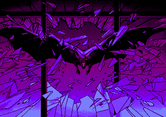
I still follow it, and I'm quite impressed with some of the demos which have been released lately, especially Batman Forever. What I'm really impressed with at the moment is not so much the demo scene, but the number of new games which have been released and are under development, many of these by people who are from the demo scene originally, and using some of the techniques that have previously only been in demos.
6. You are the author of the Parados ROM (allowing bigger capacities for discs). It's probably one of the most used ROM for the CPC. Was it hard for you to develop it ? Do you plan making another development around it, one day ?
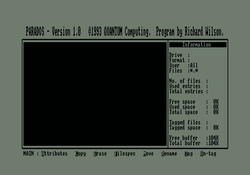
After hitch-hiking to South Wales in '93, I lived in Barry for a while, and while there I was introduced by Rob to S-DOS, which was the STS equivalent of ROMDOS. Before then, the only large disc formats I'd been using were simple variations of the standard AMSDOS DATA, SYSTEM and IBM formats. I'd been using Norton Commander on DOS and there was no easy to use utility like it for the CPC which could be used with the large formats easily, so I decided to create ParaDOS. ParaDOS 1.0 took about 4 weeks to develop, the hard part was squeezing it all into the 8K normally used by CP/M 2.2 in the AMSDOS ROM.
To answer the last part of the question: Yes. I plan on making a simple version of ParaDOS which doesn't remove the CP/M stuff, and having the utilities in a separate ROM. That way I'd have 16K to play with for the UI and be able to introduce some command line utilities like |COPY, |FORMAT etc.
To answer the last part of the question: Yes. I plan on making a simple version of ParaDOS which doesn't remove the CP/M stuff, and having the utilities in a separate ROM. That way I'd have 16K to play with for the UI and be able to introduce some command line utilities like |COPY, |FORMAT etc.
7. You released a Wolf Enstein 3D engine, which is still the most impressive raycast engine I ever seen for the Amstrad CPC. Can you describe us the technical challenges you had to face about it ? Will you develop a game with that engine one day ? If not, did you ever consider to release the sources publicly so that way someone else could write a full-featured game ?
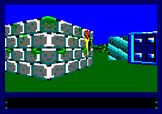
The ray casting engine was developed with the intention of writing a Wolfenstein style game. It's based on the original PC Wolfenstein code, re-written to use 8 bit maths. I'd like to improve the performance of the code using faster multiplication and division routines I've developed since. I'd also like to improve the scaling (rendering) code. The biggest problem is memory. It would be possible to speed up the scaling significantly if I had a whole 64K for scaling routines. By the way, the source code is available on the WinAPE downloads page.
8. You lived in the UK, now in Australia.. I know there is a small Amstrad CPC community in that country (cf. here). Can you tell more us about it ?
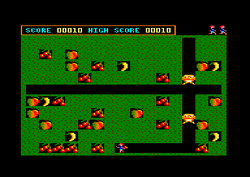
There's really not much happening here in Tasmania. Until a couple of weeks ago when one of my old friends who's now on Facebook mentioned a Fruity Frank longplay video on YouTube, I thought everyone in Tassie had forgotten about the CPC.
9. You are the author of WinAPE emulator. To this day, it's probably one of the most accurate emulator for the Amstrad CPC. It makes 2 years you did not released any updates. Do you plan making further development about it ? cf. the sourcecode editor lacks some features, more Amstrad CPC accessories could be supported (Dobbertin harddrives, speech synthesizer, or even the recent HxC Floppy Emulator device ?).
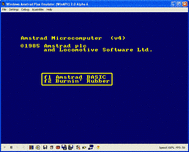
Err, yes. Unfortunately, in between real-life and PS3, I haven't had much time to develop it much further. There are a few updates which have been done and I plan on doing a release one day soon. I've also done some more development on JEMU, but I now need to work out how to align Z80 code to interrupts on a VZ in order to finish writing a routine to check the Z80 timing. One of the changes in my list is Undo/Redo on the editor and label following (ie. click a label usage to find the declaration).
10. What do you enjoy with the Amstrad CPC, how do you compare it to other ones ? What is your preferred computer and why ?

I never really got into 16 bit or 32 bit computers. The CPC is my favourite 8 bit, especially the Plus. They are capable of much more than was ever shown back in the days when they were mainstream. Without knocking the competition, the CPC is a better machine overall.
11. Finally.. this is free topic for you. Did I forget to mention anything, do you have something else to tell us ? :)
Mainly, I'd just like to thank the people who are still involved with the CPC for keeping it interesting. To Gryzor for CPC Wiki, Markus for the good work on JavaCPC, Axelay for the great games, and Johnny Olsen for testing some disc images out on the latest WinAPE for me. I have a few projects on the go right now, WinAPE and JEMU are both progressing slowly so there will be new releases soon.
Thank you a million Richard for answering those questions. It was great sharing that time with you.
I also thank Kevin Thacker who helped me to know a little more about Richard's past activities.
I also thank Kevin Thacker who helped me to know a little more about Richard's past activities.



